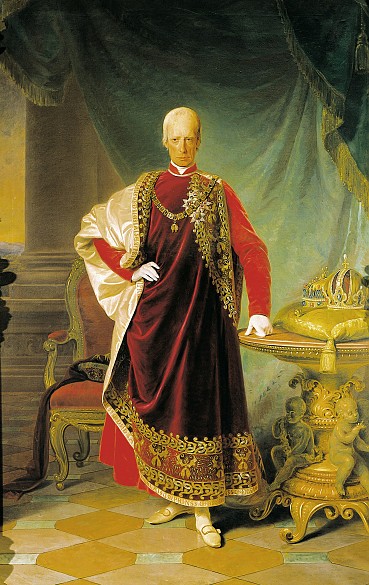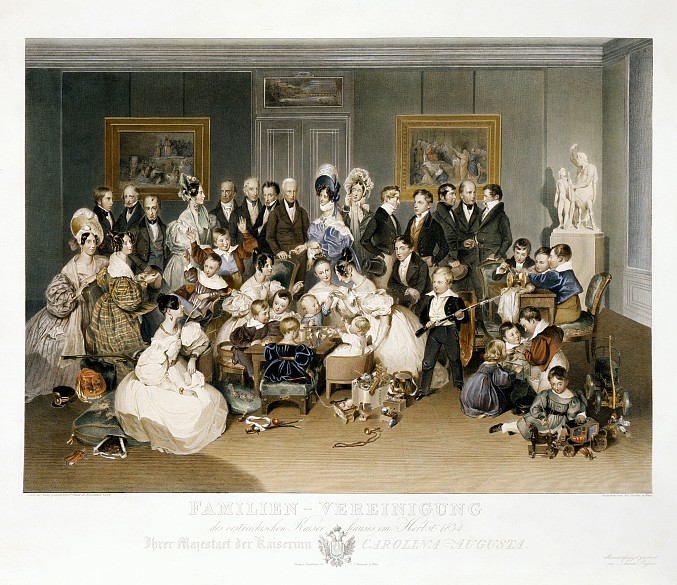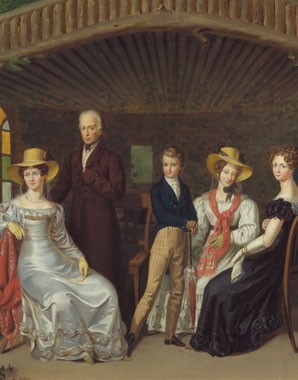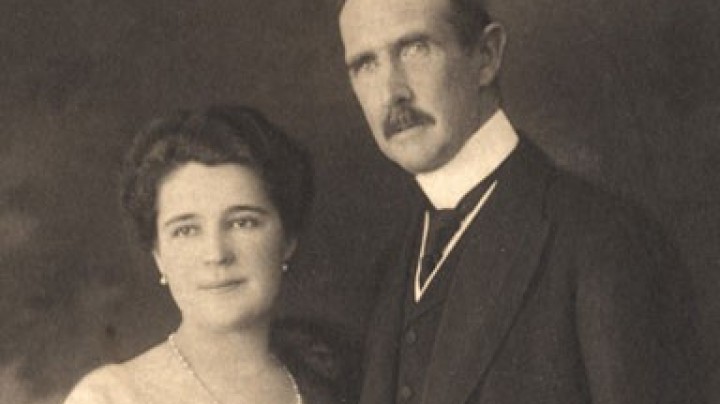No lengthy mourning – remarriage in the Biedermeier era
When an emperor loses his wife, he cannot afford to wait long to remarry, especially not the ‘Biedermeier Emperor’ in the era of the middle classes. After all, a ‘bachelor emperor’ would not have cut a very fine figure on official occasions.
Emperor Franz II (I) did not have just one but four wives (not at the same time, of course, but in succession). His feat of outliving three wives fits in well with the image of the ‘old emperor’. No sooner had his third wife Maria Ludovica passed away than Metternich was urging him to marry the Wittelsbach Karoline Auguste, who was twenty-four years younger than Franz. Her youth was to satisfy Franz’s alleged demand that in view of having three times become a widower he should now ‘finally’ be allowed a younger wife.
The emperor’s new consort was the elder stepsister of Archduchess Sophie, the mother of the later Emperor Franz Joseph. Karoline Auguste had also been married before: with Napoleon’s approval she had at the age of 16 been married to Crown Prince Wilhelm of Württemberg. It had been a ‘marriage of convenience’ of the kind customary amongst the nobility and was summed up by the groom with the pithy comment: ‘We are political sacrifices.’ Prince Wilhelm showed a correspondingly low level of interest in the union, which he had annulled by a Lutheran church court after Napoleon’s defeat in 1814.
Before Franz was finally able to marry Karoline Auguste in 1816, he had to deal with competition for the hand of the Wittelsbach princess from his own brother Grand Duke Ferdinand III of Tuscany. Franz’s description of his marriage is in full accord with the Biedermeier ideal of the family: he called his consort his ‘dear wife’, his ‘homely pearl’ and the ‘angel of the house’. She too is said to have greatly loved her ‘best treasure’ and ‘man of her heart’ and even today is presented as ‘a family woman through and through’, the very epitome of the bourgeois ideal.
Family relations became more complicated in 1824 when Karoline Auguste’s stepsister, Sophie of Bavaria, married Franz’s son Franz Karl, thus making the two women not only stepsisters but also – in a graphic example of the convoluted relations brought into being by intermarriage between the European dynasties – stepmother- and stepdaughter-in-law.
Having succeeded in outliving three wives, the ‘old emperor’ Franz failed to achieve this with his fourth, falling seriously ill in 1826 and thenceforth suffering greatly from poor health. In the winter of 1834/35 he came down with pneumonia, to which he eventually succumbed. His widow Karoline Auguste lived on for another thirty-eight years. After her husband died in their bedchamber, she had an altar erected by his deathbed at which a requiem mass was celebrated annually.



















